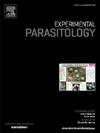马兰花精油对未成熟期登革热、丝虫病和疟疾病媒及四种蚊虫捕食者的防治效果
IF 1.6
4区 医学
Q3 PARASITOLOGY
引用次数: 0
摘要
蚊子是传染病的重要媒介,每年在全世界造成数千人死亡。本试验研究了马兰挥发油对斯氏按蚊、致倦库蚊和埃及伊蚊的毒性。未成熟阶段分别暴露于3.125、6.25、12.5、25和50 ppm 5种不同浓度;根据世界卫生组织标准方案,对其杀虫活性进行了轻微修改。24 h时,EO对3只蚊卵的杀卵毒性为100%,24 h时对按蚊、库蚊和伊蚊3龄幼虫的LC50值分别为5.0、4.9和6.2 ppm,但未见明显的杀卵毒性。在EO中发现了三种可能有助于其杀蚊特性的主要化合物。毒性评价表明,黄花菊的EO对被试天敌如网纹瓢虫、蜻蜓若虫、indicus和affinis均无不良影响。然后制定了EO用于现场应用,结果证实其具有良好的杀蚊活性(20-28 ppm),对测试的自然捕食者没有任何毒性。本研究强调了黄花蓟马的EO在蚊虫管理中的潜力,表明它可以作为合成化学品的替代品,在对环境影响最小的情况下提供有效的蚊虫控制。本文章由计算机程序翻译,如有差异,请以英文原文为准。
Efficacy of essential oil from Maranta arundinacea L. against immature stages of dengue, filariasis, and malaria vectors and four mosquito predators
Mosquitoes are significant vectors of infectious diseases, causing thousands of fatalities worldwide each year. This present study was to check the toxicity of essential oil (EO) from Maranta arundinacea L. against three mosquito species: Anopheles stephensi, Culex quinquefasciatus and Aedes aegypti. The immature stages were exposed to five different concentrations such as 3.125, 6.25, 12.5, 25 and 50 ppm; these were used to check the insecticidal activity according to WHO standard protocol with slight modification. The EO presented 100 % ovicidal toxicity against the eggs of treated three mosquitoes at 24 h. Strong mosquitocidal effects were observed, with LC50 values of 5.0, 4.9 and 6.2 ppm for the larvae (3rd Instar) of Anopheles, Culex and Aedes species, respectively, at 24 h. However, no significant pupicidal toxicity was observed in any of the mosquito. Three main compounds were identified in the EO that might have contributed to its mosquitocidal properties. Toxicity assessments indicated that the EO from M. arundinacea did not adversely affect the tested natural predators such as P. reticulata, Dragon fly nymph, D. indicus and G. affinis. The EO was then formulated for field application, which confirmed its promising mosquitocidal activity (20–28 ppm), without any toxicity to tested natural predators. This study highlights the potential of EO from M. arundinacea in mosquito management, suggesting that it can serve as a possible substitute to synthetic chemicals, offering effective mosquito control with minimal environmental impact.
求助全文
通过发布文献求助,成功后即可免费获取论文全文。
去求助
来源期刊

Experimental parasitology
医学-寄生虫学
CiteScore
3.10
自引率
4.80%
发文量
160
审稿时长
3 months
期刊介绍:
Experimental Parasitology emphasizes modern approaches to parasitology, including molecular biology and immunology. The journal features original research papers on the physiological, metabolic, immunologic, biochemical, nutritional, and chemotherapeutic aspects of parasites and host-parasite relationships.
 求助内容:
求助内容: 应助结果提醒方式:
应助结果提醒方式:


